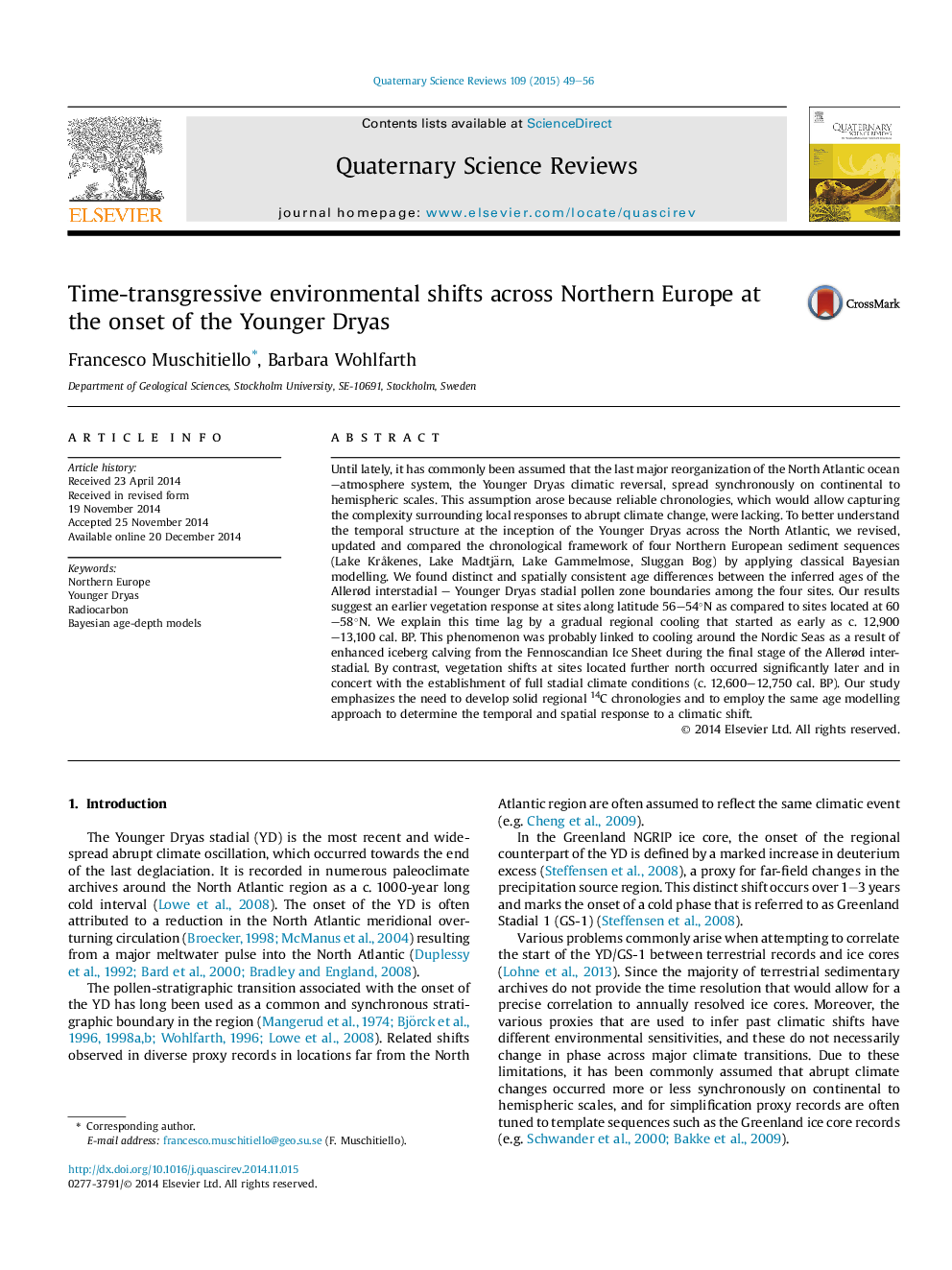| Article ID | Journal | Published Year | Pages | File Type |
|---|---|---|---|---|
| 4735938 | Quaternary Science Reviews | 2015 | 8 Pages |
•New age estimates of the Alleröd–Younger Dryas pollen boundary in N and NW Europe.•Vegetation shifts occurred asynchronously.•Cooling was experienced near 56–54°N as early as c. 12,900–13100 cal BP.
Until lately, it has commonly been assumed that the last major reorganization of the North Atlantic ocean–atmosphere system, the Younger Dryas climatic reversal, spread synchronously on continental to hemispheric scales. This assumption arose because reliable chronologies, which would allow capturing the complexity surrounding local responses to abrupt climate change, were lacking. To better understand the temporal structure at the inception of the Younger Dryas across the North Atlantic, we revised, updated and compared the chronological framework of four Northern European sediment sequences (Lake Kråkenes, Lake Madtjärn, Lake Gammelmose, Sluggan Bog) by applying classical Bayesian modelling. We found distinct and spatially consistent age differences between the inferred ages of the Allerød interstadial – Younger Dryas stadial pollen zone boundaries among the four sites. Our results suggest an earlier vegetation response at sites along latitude 56–54°N as compared to sites located at 60–58°N. We explain this time lag by a gradual regional cooling that started as early as c. 12,900–13,100 cal. BP. This phenomenon was probably linked to cooling around the Nordic Seas as a result of enhanced iceberg calving from the Fennoscandian Ice Sheet during the final stage of the Allerød interstadial. By contrast, vegetation shifts at sites located further north occurred significantly later and in concert with the establishment of full stadial climate conditions (c. 12,600–12,750 cal. BP). Our study emphasizes the need to develop solid regional 14C chronologies and to employ the same age modelling approach to determine the temporal and spatial response to a climatic shift.
